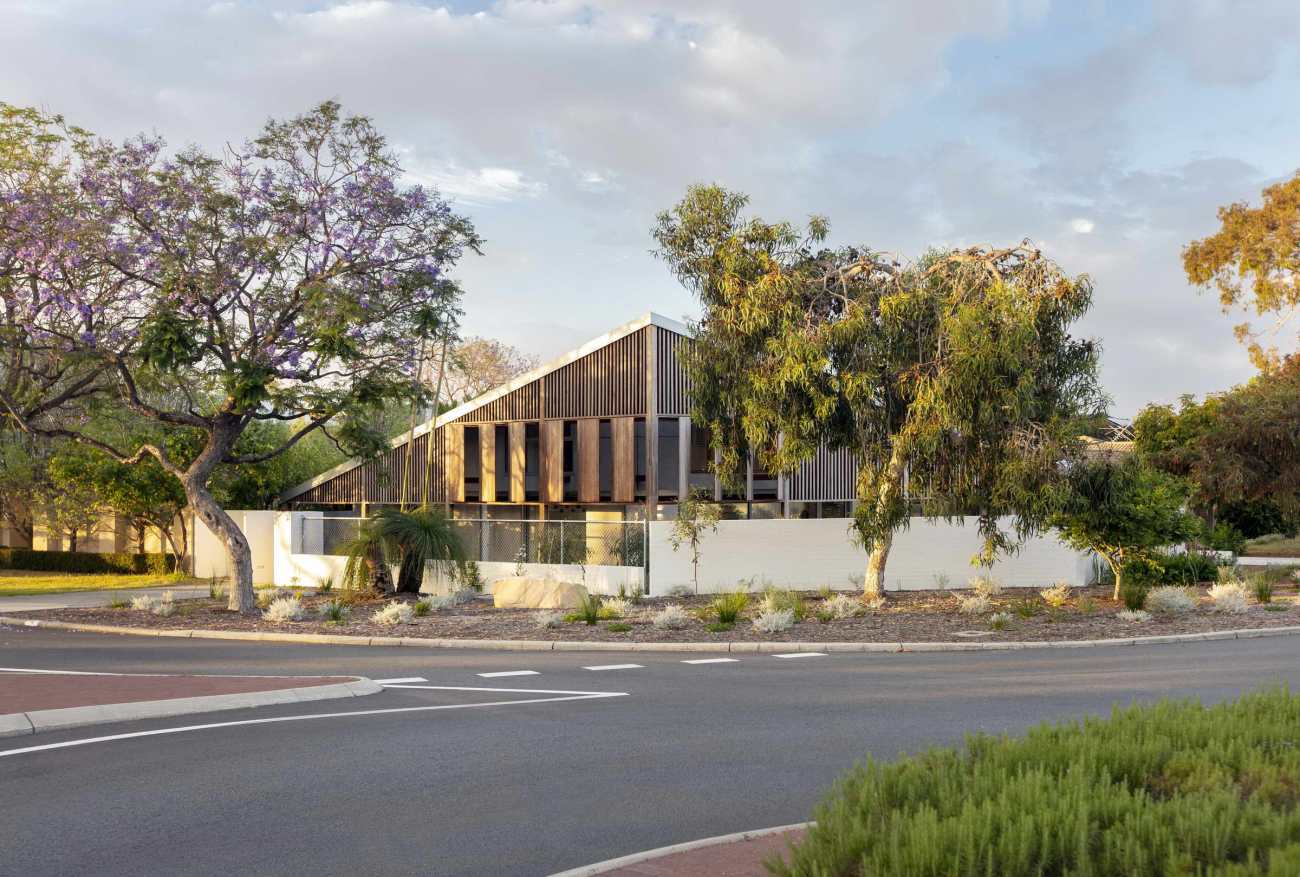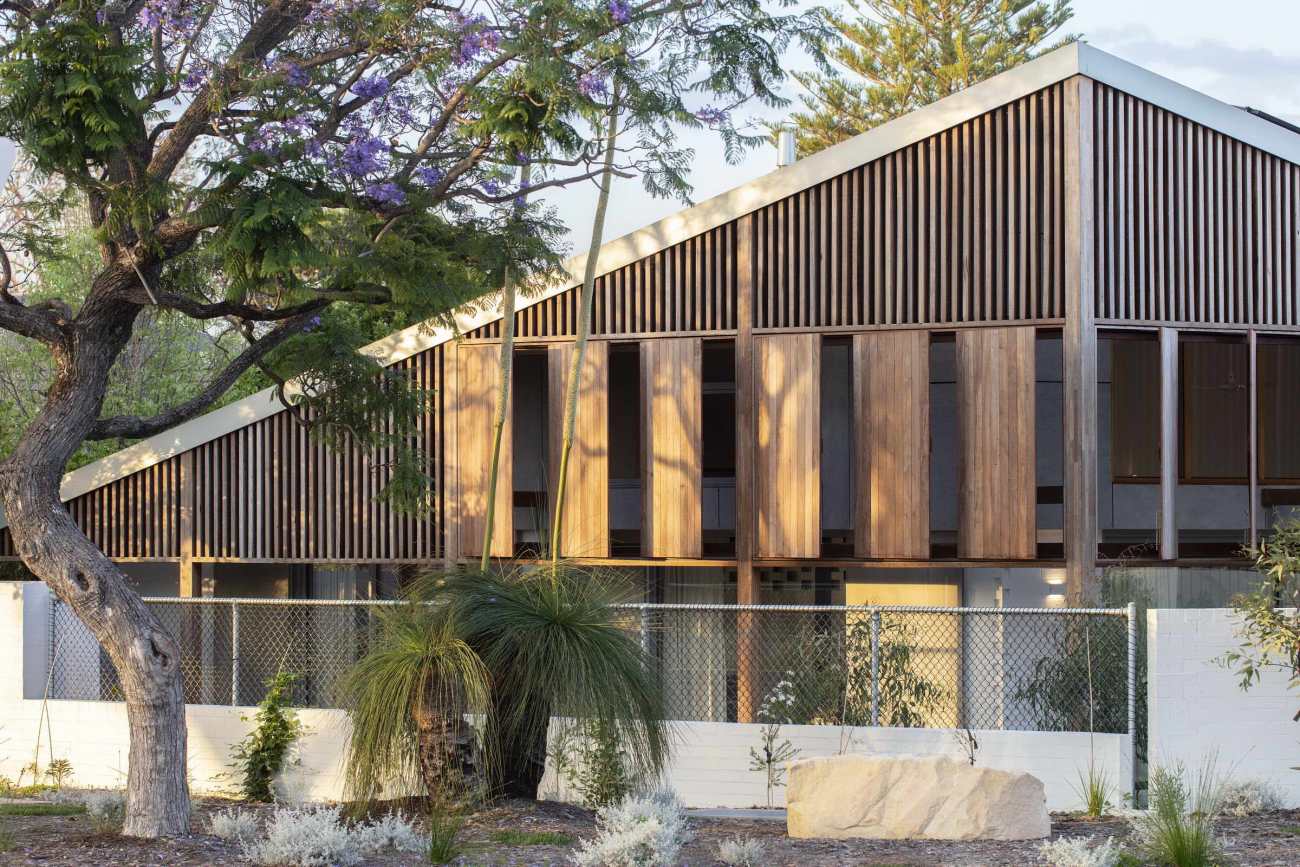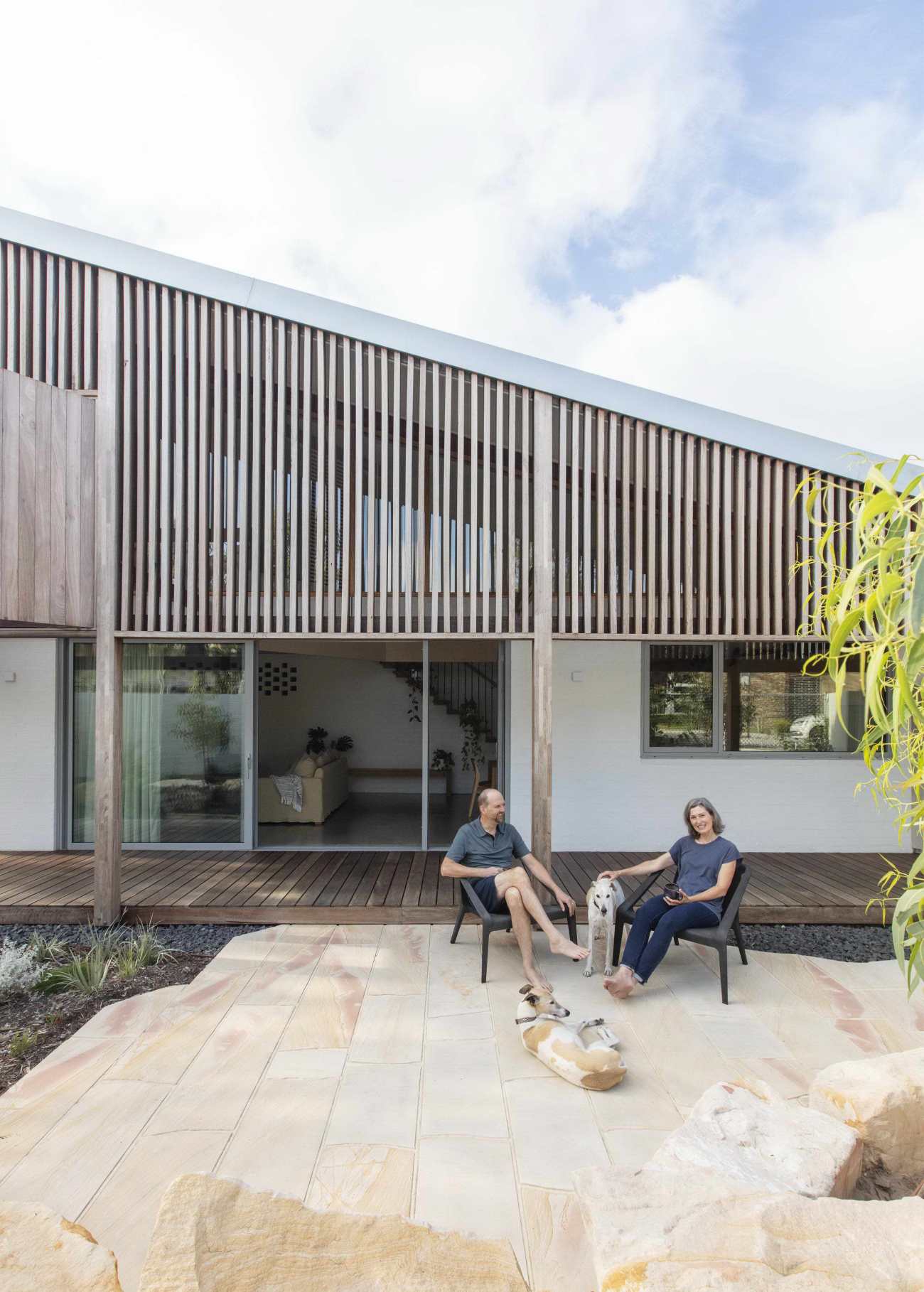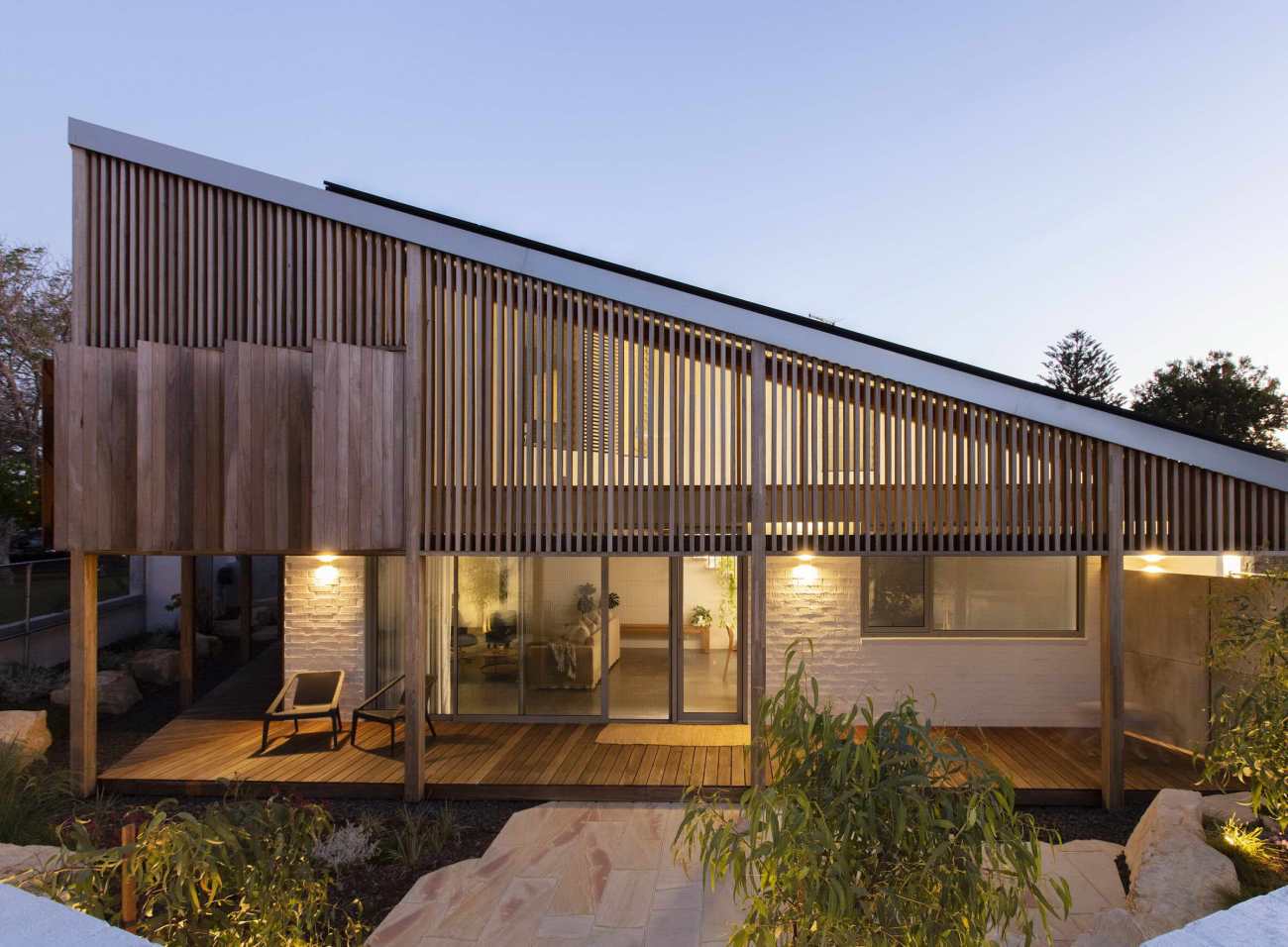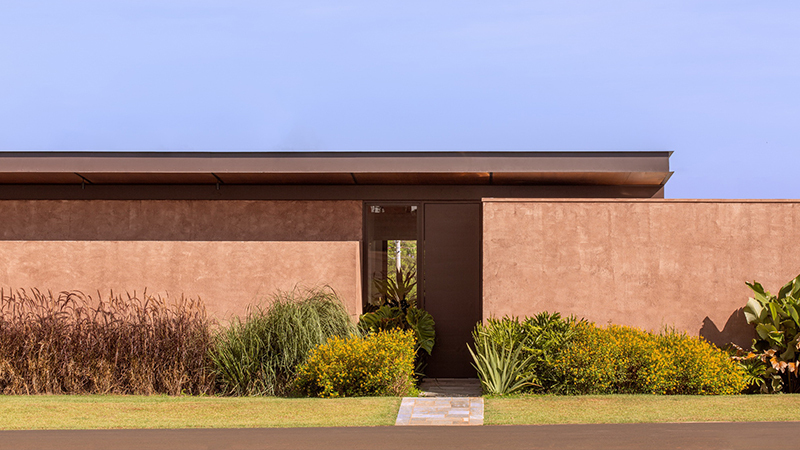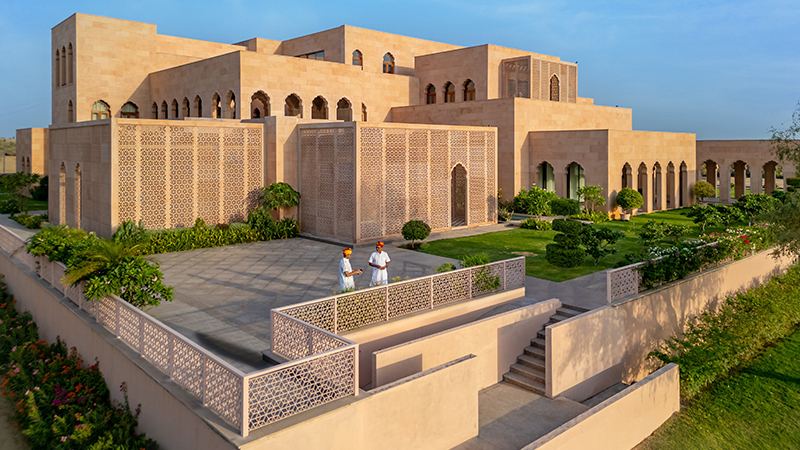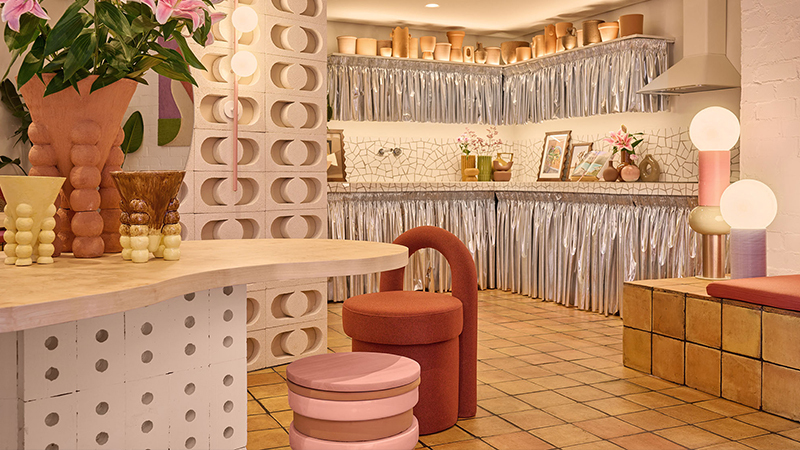| 公司: | Philip Stejskal Architecture | 类型: | 建筑 |
|---|---|---|---|
| 地区: | 澳大利亚 | 标签: | 别墅私宅 |
我们的客户希望有一个小型住宅,在那里他们可以居家养老,偶尔也可以容纳他们的两个成年子女。这个新房子取代了一个普通的单层附属住宅,之前是1980年代建造的三层住宅之一,占据了环岛的一个突出位置。
Our clients wanted a down-sizer home to accommodate, where they could age-in-place and occasionally accommodate their two adult children. This new house replaces a modest, single storey attached dwelling – one of a triplex built in the 1980s – and occupies a prominent position on a roundabout.
他们要求的是建筑必要拥有一些"标志性"的东西,因此设计师们创造了一个对其周边环境有重大贡献的建筑,成为当地的一个微型地标。
They asked for something ‘iconic’, so we created a building that makes a significant contribution to its immediate setting, recognising the site’s role as unofficial gateway to the local shopping precinct.
我们首先着眼于历史,特别是伟大的澳大利亚建筑,以及它在本世纪中期的对应物,在MacMansion出现之前,这种类型在Applecross有很好的体现,这些先辈们告诉我们对气候、规模和形式的反应。就像阿库布拉的宽檐一样,宅院的阳台提供了保护和避暑。在这个项目中,同样的宽屋檐它保护了北面的立面,并环绕到东面的立面,为建筑提供太阳保护和隐私缓冲。阳台变成了一个垂直的木板屏风,可以部分操作,以使冬季的阳光进入室内。
We looked firstly to history – particularly the great Australian homestead – and also its mid-century counterpart; a type that was well represented in Applecross until the advent of the MacMansion. These forebears informed our response to climate, scale and form. Like the wide brim of an Akubra, the homestead verandah offers protection and reprieve from the heat. In this case, it protects the northern façade and wraps around to the eastern elevation – which overlooks busy Ardross Street – providing both solar protection and a privacy buffer. The verandah transforms into a vertical batten screen, which is operable in parts, to allow winter sun to enter the house.
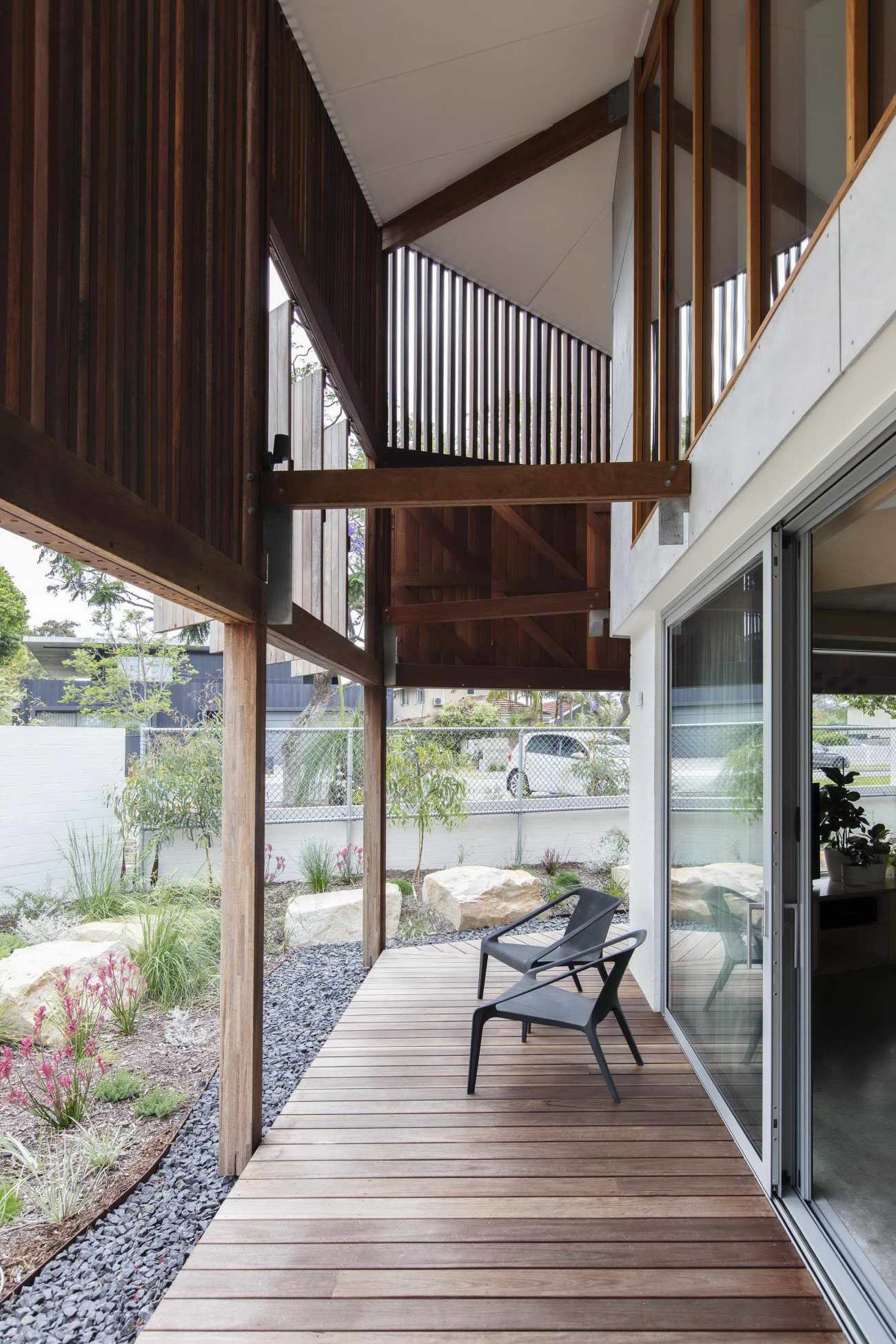 | 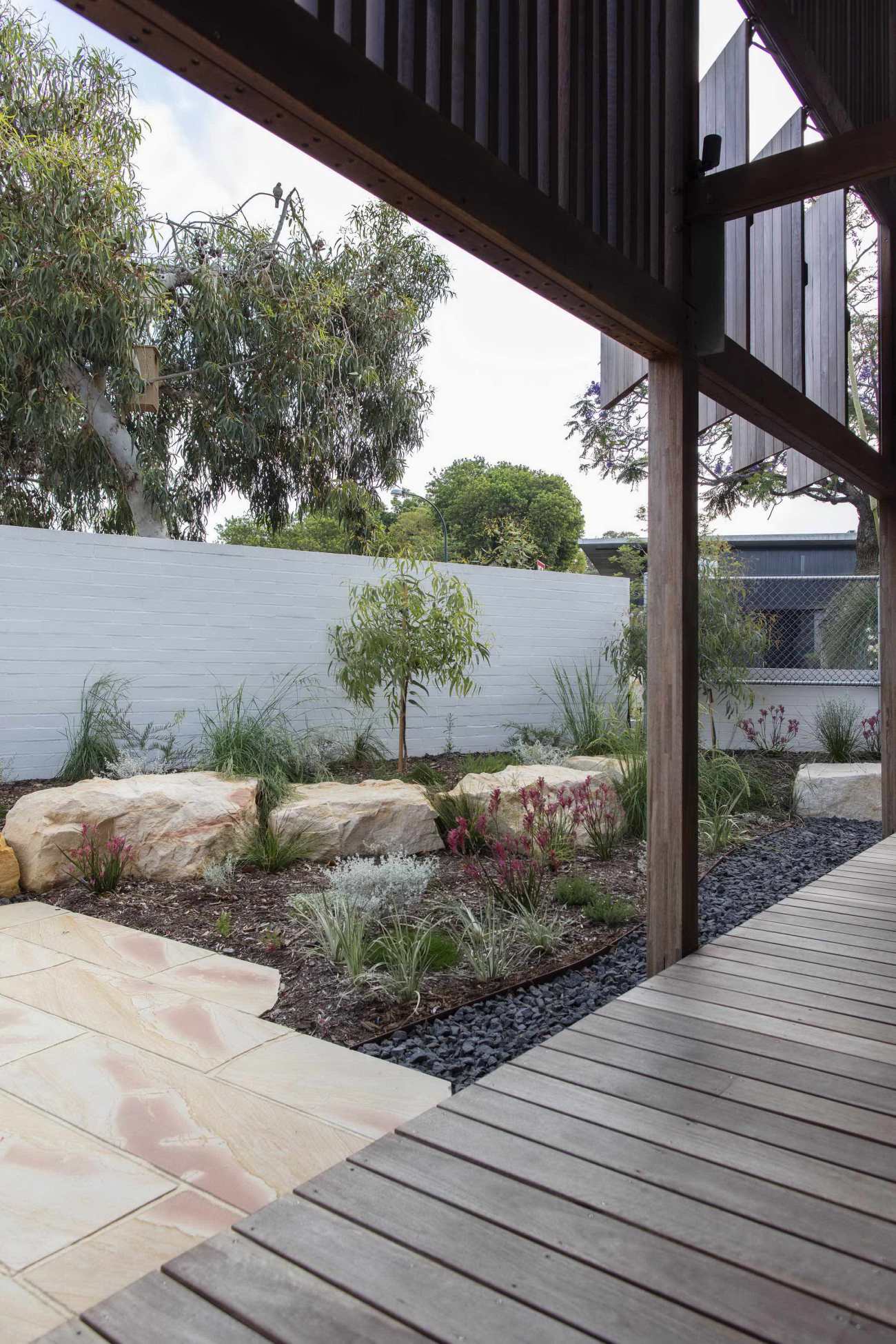 |
在内部,平行四边形的规划是出于方位和街道排列的考虑,公共空间位于更靠近外缘的地方。楼上的客人卧室和第二间浴室被安置在屋顶的隐蔽处。建筑体量的安排使最高的中间部分位于拐角处,而屋顶线逐渐变细,形成低矮的尖端,与两个邻居相邻。
Internally, the parallelogram-shaped plan arose from orientation and street alignment considerations, with public spaces located closer to the outer edges. Upstairs, guest bedrooms and a second bathroom are accommodated under the cloak of the roof. The massing is arranged so the tallest, middle section addresses the corner, while the roofline tapers down to low tips that abut both neighbours.
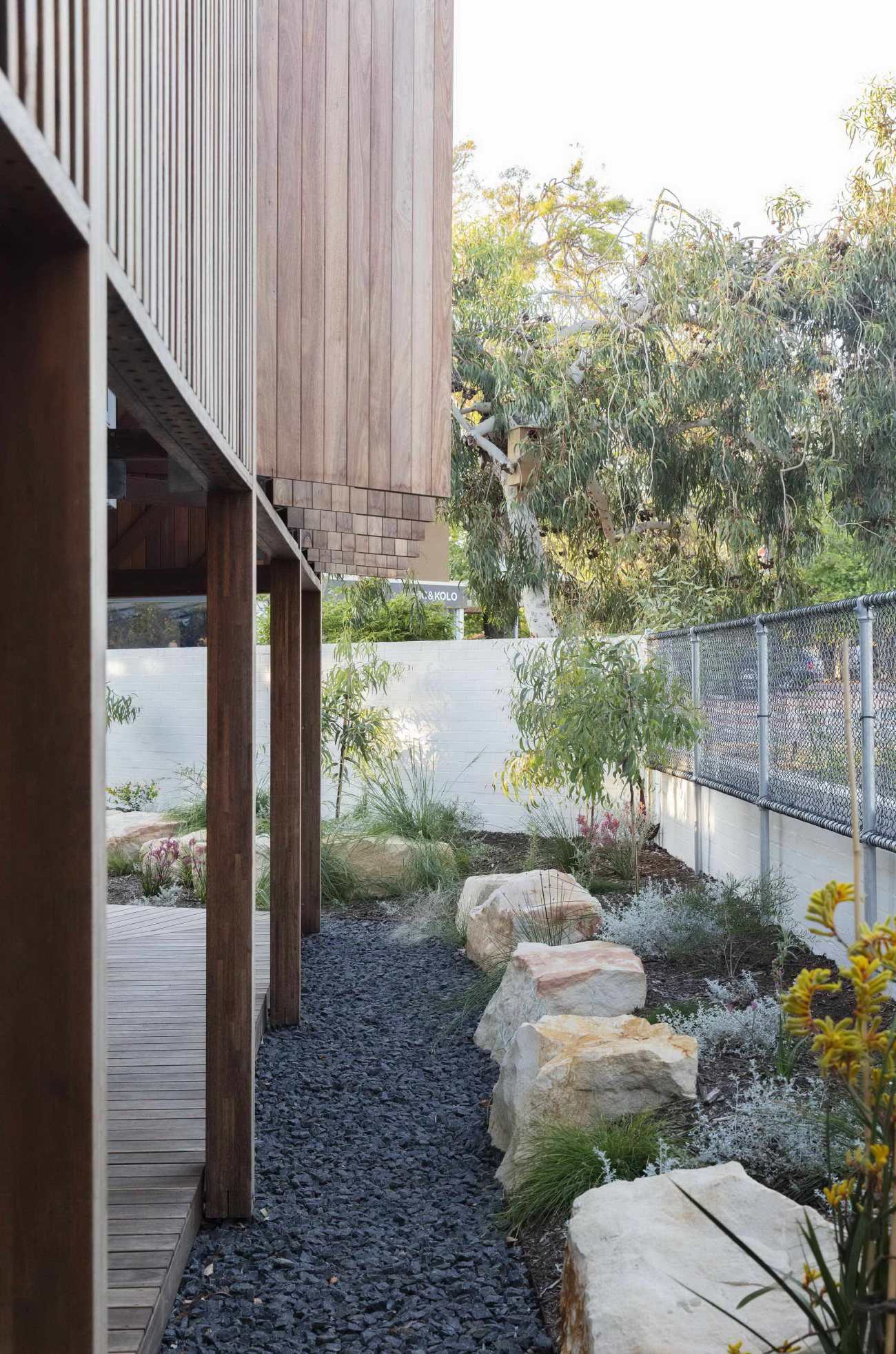 | 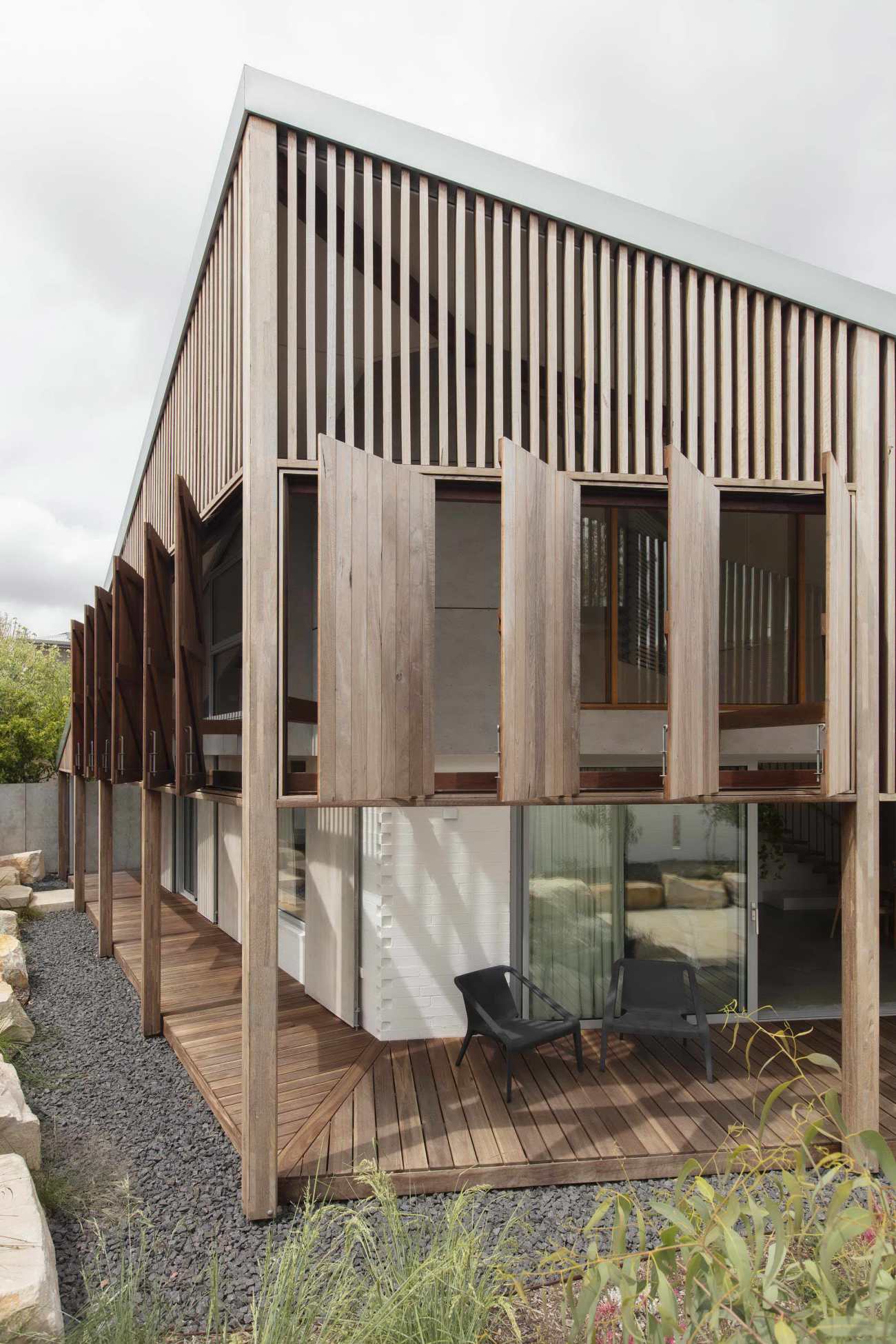 |
尽管它位于环岛和商业中心的旁边,但房子在其坚实的砖墙和斑驳的树胶面纱后面提供了一种安静和退缩的感觉。我们与景观设计师紧密合作,创造了一个避难所、一个建筑和花园的统一领域。
Despite its location beside the roundabout and commercial hub, the house offers a sense of quiet and retreat behind its solid brick fence and spotted gum veil. We worked closely with our landscape architect to create a sanctuary; a unified domain of building and garden.
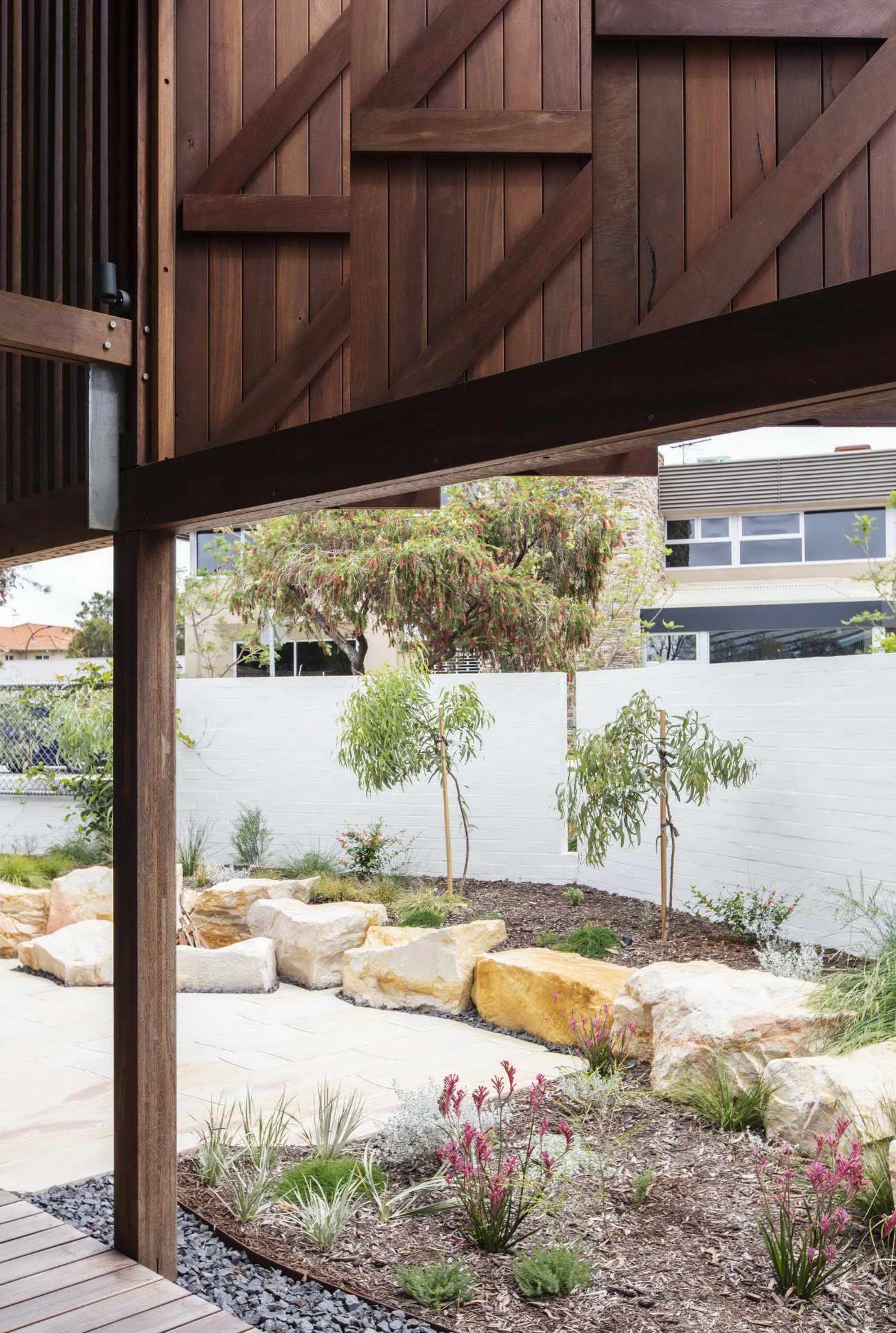 | 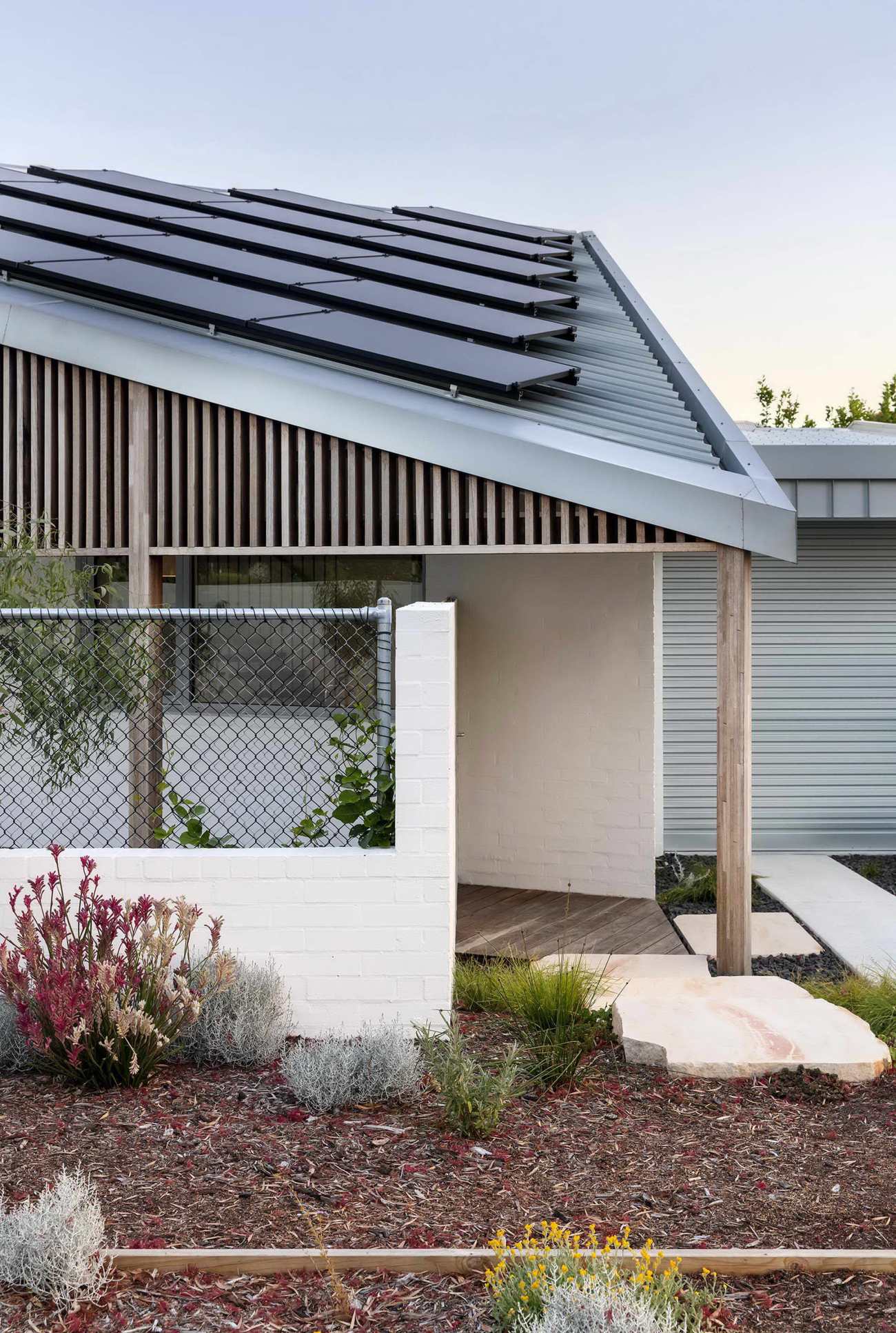 |
We also collaborated with structural engineers, energy assessors, lighting and air-conditioning experts on the design, which incorporates Passivhaus principles (sealed perimeter, lift&lock sliders) suited to this climate. Hydronic in-slab heating and a heat recovery ventilation system ensure warmth and good indoor air quality when the house is sealed in winter.
在夏季,由于中央核心区的砖块穿孔的交叉通风,它可以在夜间轻松冷却。丰富的内部热质使内部温度全年稳定,而被动式设计原则(方向、保护开口)有助于在夏季将热负荷降至最低,在冬季将其最大化。
In summer, it can be easily cooled at night thanks to cross ventilation via brick perforations in the central core. Generous internal thermal mass stabilises internal temperatures all year-round, while passive design principles (orientation, protection of openings) help to minimise heat-load in summer and maximise it in winter.
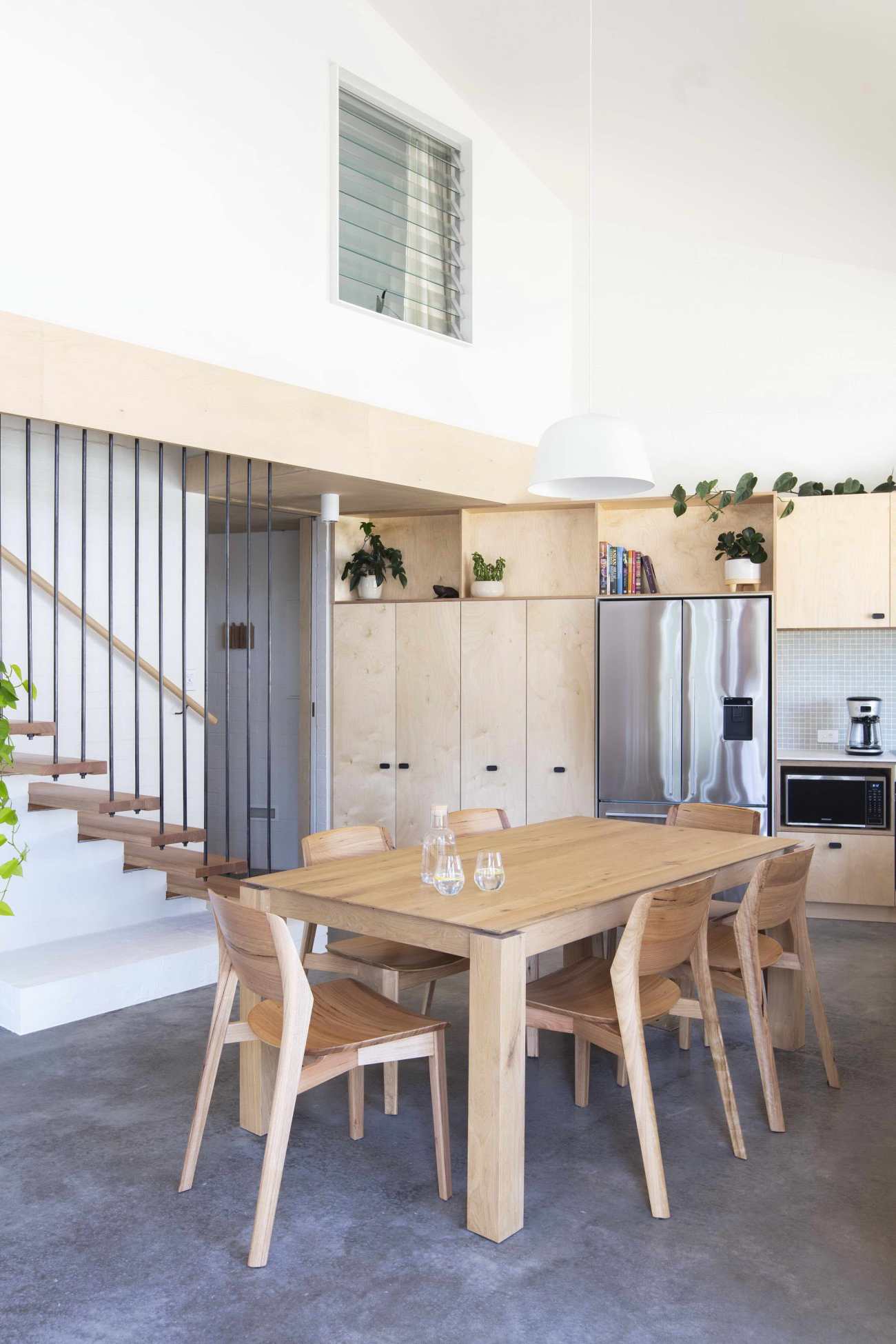 | 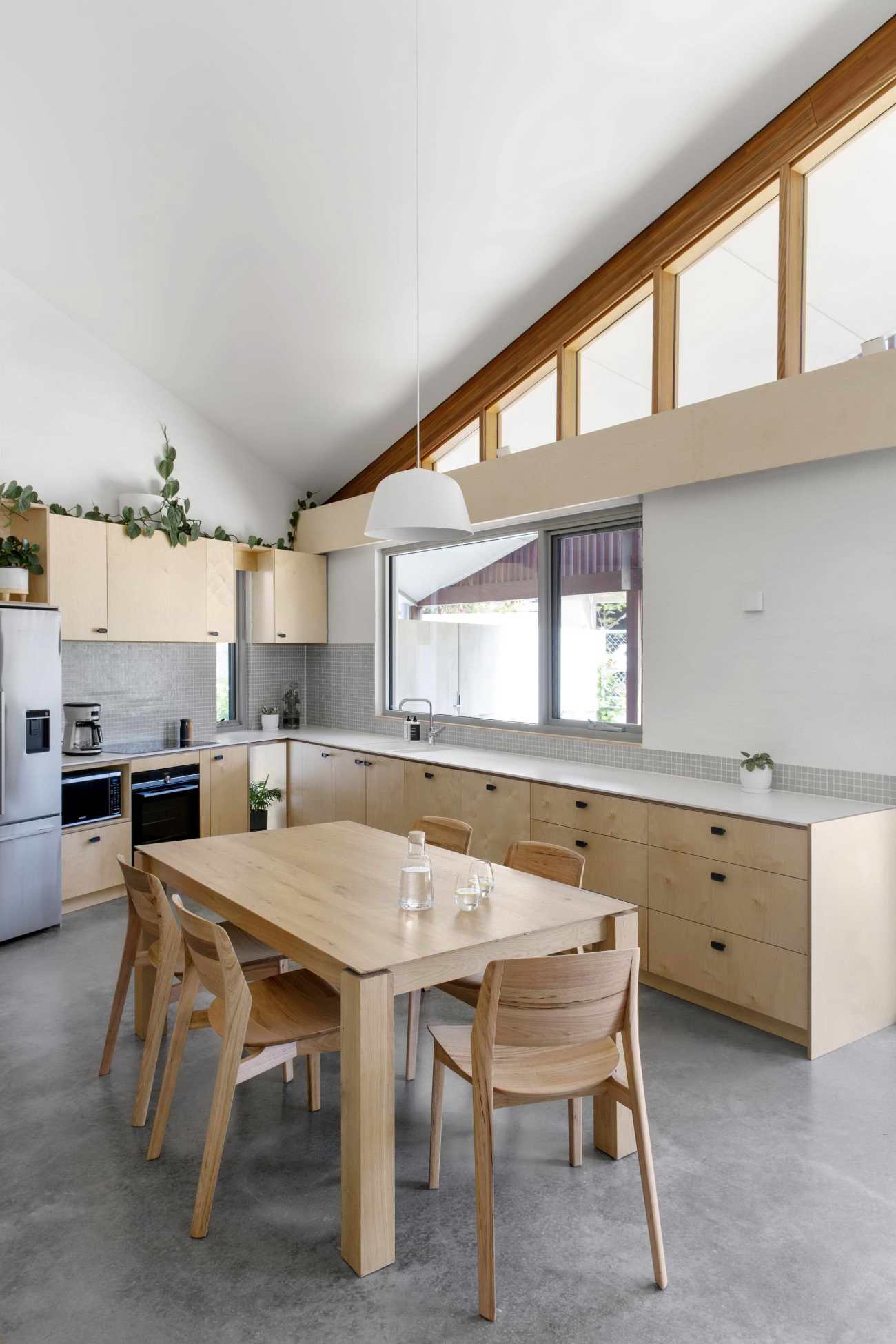 | 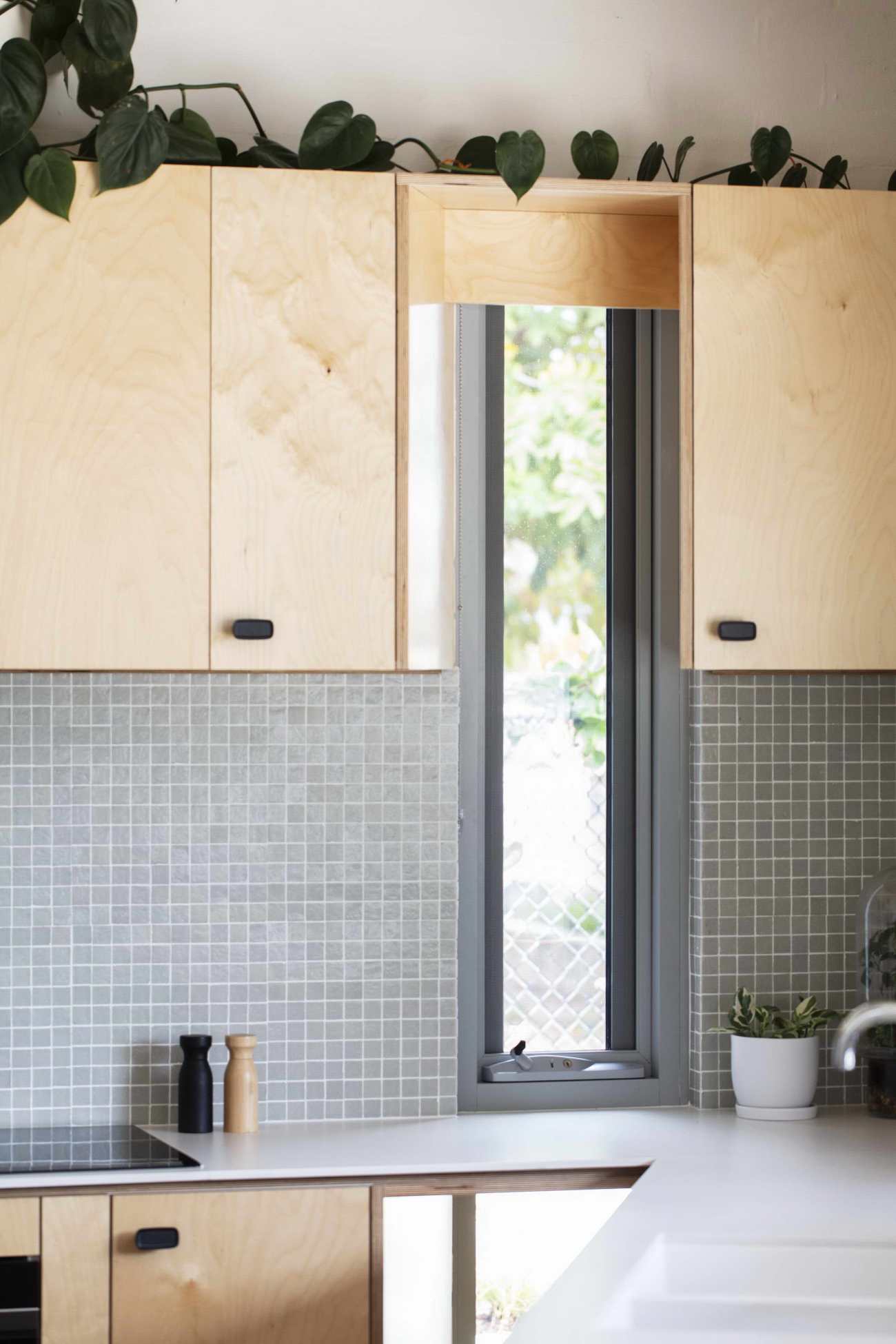 |
 | 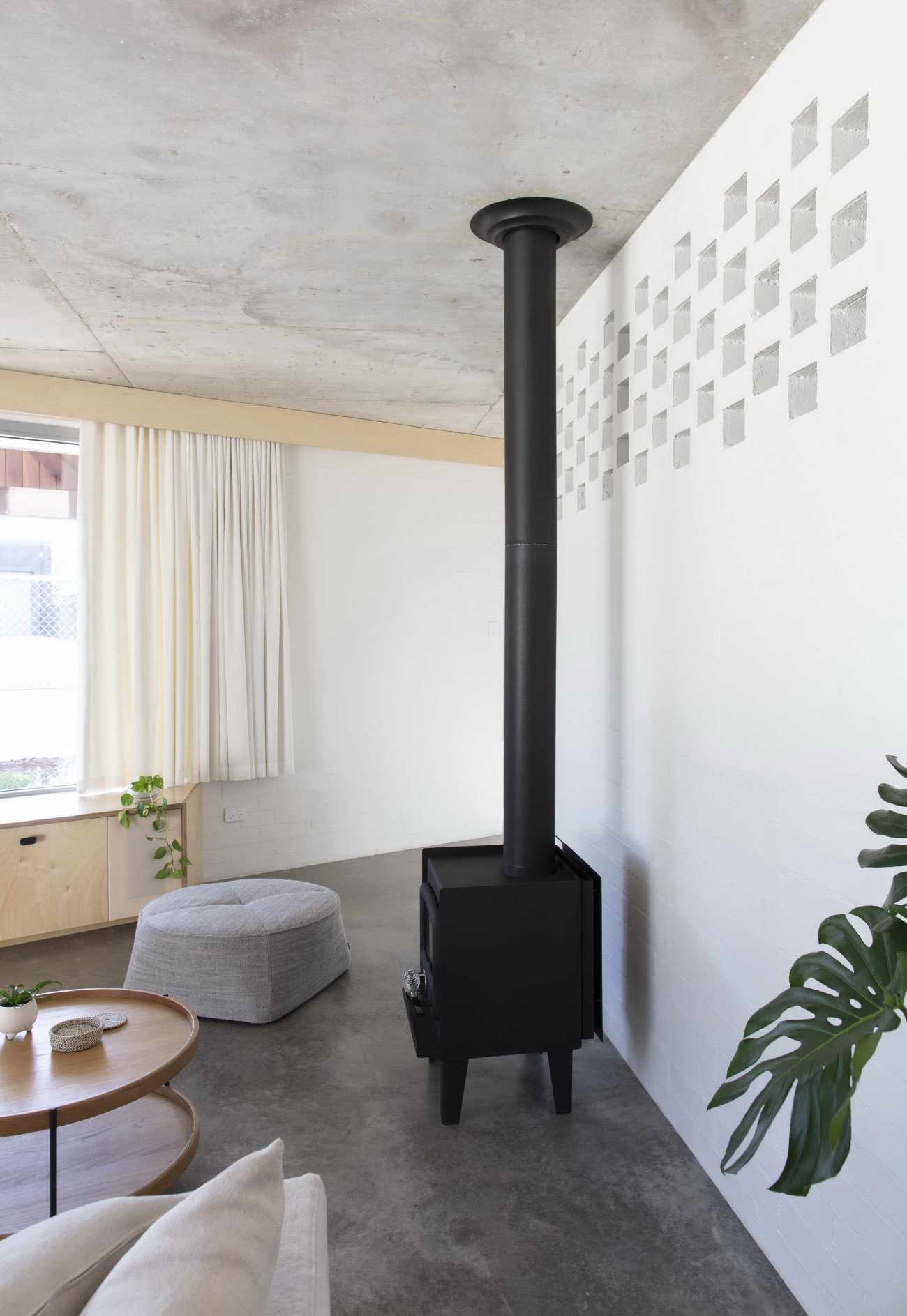 | 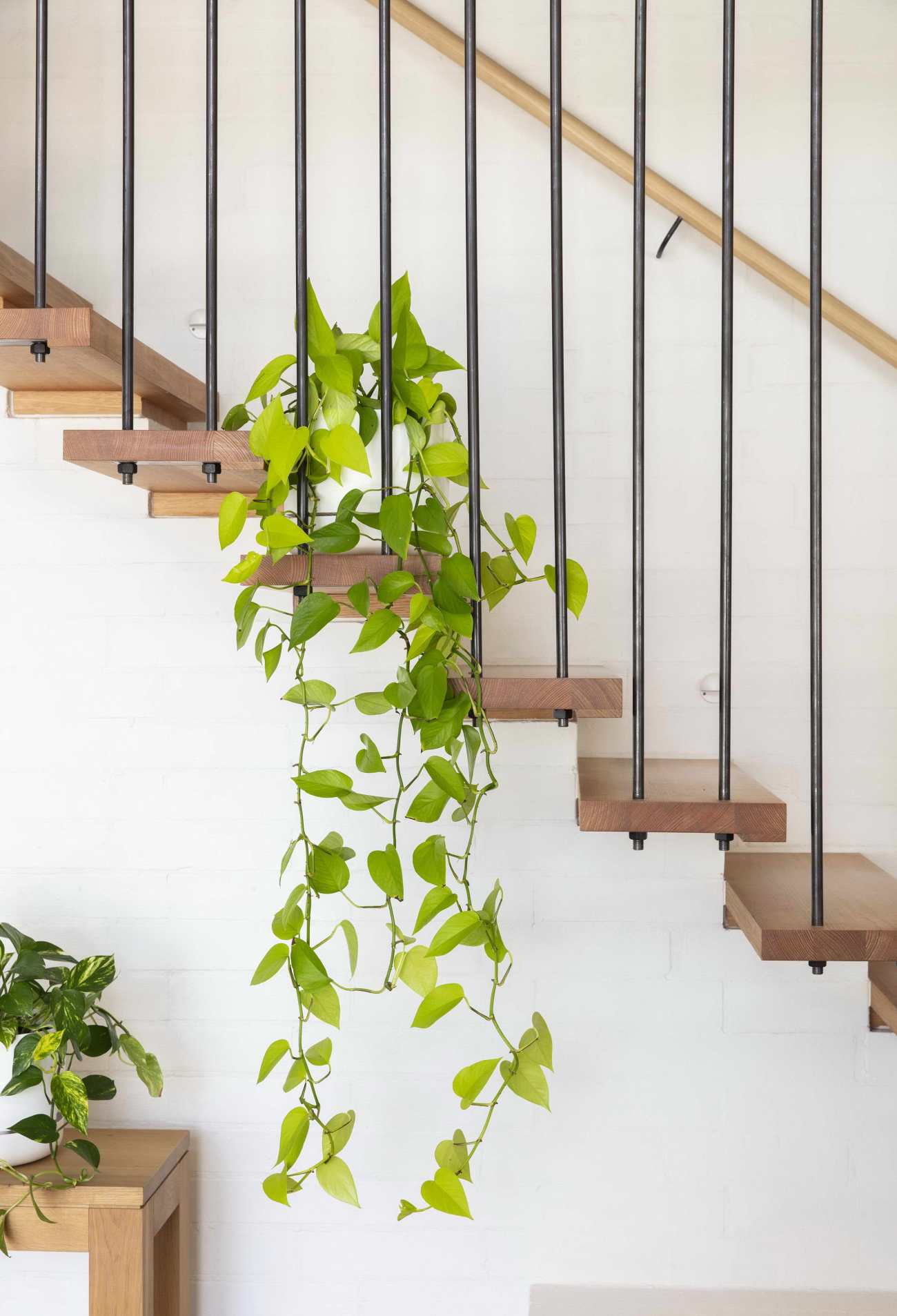 |
我们是否满足了设计一个 "标志性"建筑的要求?根据剑桥字典的定义"代表重要的东西",那么,我们确定是的。我们的工作有可能在大大小小的步骤中一点一点地改变我们的城市,把低效和不体面的东西(也许缺乏光线,或通风,或快乐),改为提供所有这些品质。这种方法给我们的客户和周围的社区带来了好处;创造出的建筑在与公共领域的互动中是慷慨的,在它们的贡献中是谦逊而丰富的。
Have we satisfied the brief to design an ‘iconic’ building? According to the Cambridge dictionary definition - “to represent something of importance” –then, yes, we believe so. Our work has the potential to transform our city in small and large steps, bit by bit, taking what is inefficient and undignified (perhaps lacking light, or ventilation, or joy) and delivering all of those qualities instead. This approach delivers benefits to our clients, and to the surrounding community; creating buildings that are generous in their interaction with the public domain, humble yet rich in what they contribute. This house is conscious of its place and the lineage of buildings that have embraced the same values throughout history.
Project: MacDonald Road House
Design Firm: Philip Stejskal Architecture
Location: Applecross, Australia
Landscape Architect: Annghi Tran Landscape Architecture Studio
Builder: Portrait Custom Homes
Lighting: UNIOS
Photographer: Bo Wong
更新日期:2021-05-24 13:34:58
非常感谢 Philip Stejskal Architecture 带来的精彩项目, 查阅更多Appreciations towards Philip Stejskal Architecture for sharing wonderful work on hhlloo. Click to see more works!
